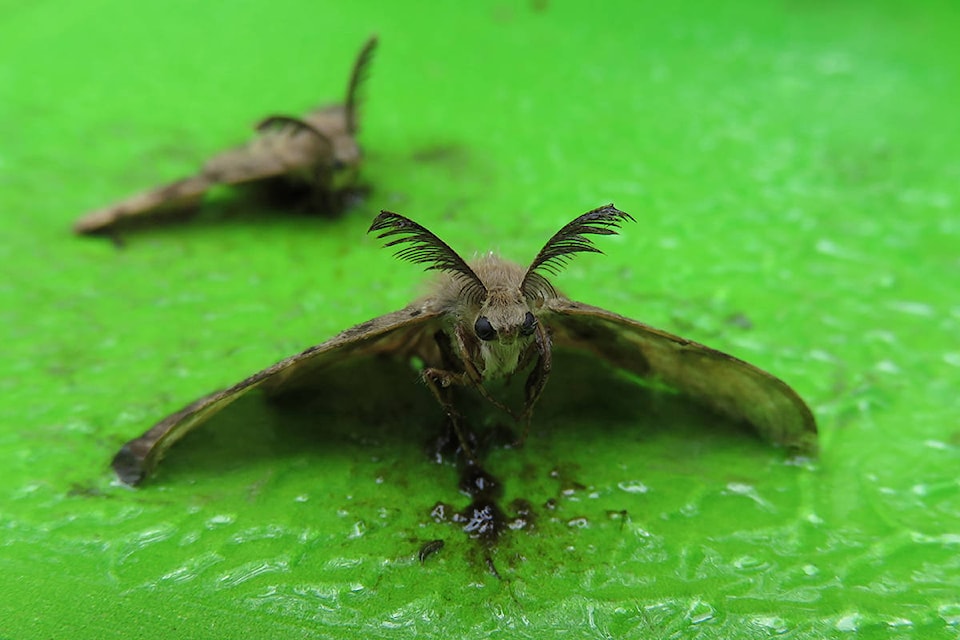You’re invited to attend a community open house and participate in a discussion about the 2020 gypsy moth aerial spray treatment program planned for Raspberry.
The meeting will be held on Thursday, Jan. 23, from 4:30 to 8 p.m. at the Castlegar and District Community Complex (Kootenay Room), 2102 6th Ave.
Members of the B.C. gypsy moth technical advisory committee will be joined by representatives from the Ministry of Environment and Climate Change Strategy, Ministry of Agriculture and Canadian Food Inspection Agency, as well as other experts, to answer questions and provide information about the 2019 trapping season and the planned 2020 aerial spray program.
The 2019 trapping data shows that a population of moths in Raspberry has persisted for at least two years and appears to be growing. The gypsy moth technical advisory committee has determined it is necessary to treat 167 hectares to eradicate gypsy moth.
The planned treatment will use aircraft to apply Bacillus thuringiensis var kurstaki (Btk), a biological insecticide that occurs naturally in soil and is commonly used in organic agriculture. Btk is effective at treating gypsy moth. It impacts only caterpillars that eat sprayed leaves and has a proven safety record around humans. Livestock, pets, birds, fish, spiders, bees, ladybugs and amphibians are not impacted by Btk.
The gypsy moth is an introduced pest species. The caterpillars feed on tree leaves and can damage forests, farms and orchards. Large gypsy moth populations defoliated sections of forests and residential areas in Ontario and the eastern United States in recent years.
Learn More
To learn more about gypsy moths, visit gov.bc.ca/gypsymoth or call toll-free: 1-866-917-5999.
For information about the permit application and to view a map of the treatment zone, visit: https://bit.ly/30kv6ad
The permit application and maps are also available for viewing at the Regional District of Kootenay Boundary, 202-843 Rossland Ave., Trail.
